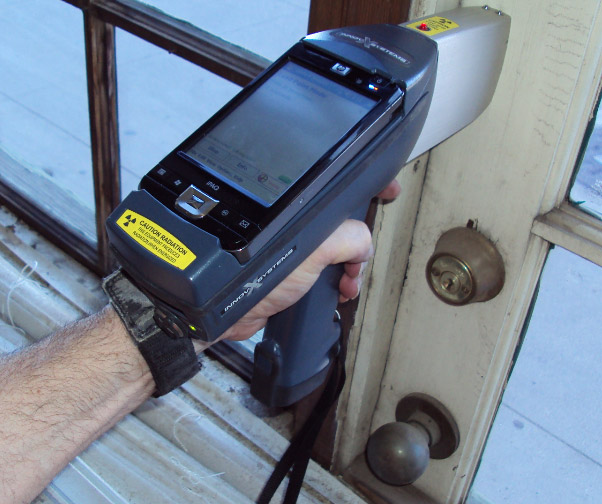Lead Removal Contractors-- Seasoned Experts for Lead Abatement
Lead Removal Contractors-- Seasoned Experts for Lead Abatement
Blog Article
Step-by-Step Process for Effective Lead Infraction Remediation
Attending to lead violations demands a precise and structured technique to ensure both safety and security and regulative compliance. The journey begins with the accurate detection and analysis of contamination resources, making use of cutting-edge analysis devices. Following this, adherence to government and state regulations is vital to developing an efficient remediation plan. Such a plan needs to information the specific approaches and timelines for activity. The actual remediation needs proficient personnel to carry out these strategies while strictly complying with safety methods. But what occurs after the remediation is finished? The answer exists in recognizing the vital post-remediation techniques that guarantee long-term safety and security and neighborhood well-being.

Detection and Evaluation
Detection and analysis are important action in the removal of lead violations. To make certain a reliable removal process, it is vital to perform a complete evaluation of the setting where potential lead direct exposure exists. The first phase of discovery involves identifying sources of lead contamination, which can be located in paint, water pipes, dirt, and dirt. Using innovative diagnostic devices such as X-ray fluorescence (XRF) analyzers and atomic absorption spectroscopy (AAS) can offer specific measurements of lead focus.
Once detection is completed, a comprehensive evaluation needs to be taken on. This includes evaluating the degree and intensity of contamination, as well as determining populations in danger, especially youngsters and expectant females. Threat analyses frequently include tasting and lab analysis, environmental surveys, and health impact studies. The gathered data should be carefully documented to support the development of an efficient remediation technique (Lead Violation Removal in NYC).
Additionally, it is essential to prioritize areas with the highest levels of contamination and those that pose the best health and wellness risks. Effective communication with stakeholders, including residential property proprietors, citizens, and public health authorities, is crucial for ensuring that all events are notified regarding the findings and the succeeding steps needed for remediation. This initial discovery and assessment stage prepares for an effective lead infraction remediation process.

Legal and Regulatory Conformity
Navigating the landscape of legal and governing compliance is a pivotal element of effective lead violation remediation. Conformity guarantees not only the safety and security of affected populations yet also the reputation and legal standing of the organization accountable for removal.
State and regional laws can vary, usually imposing additional responsibilities or more rigid criteria. A detailed understanding of all relevant lawful structures is crucial. This involves meticulous documentation of all removal tasks to show conformity. Failure to adhere to these policies can cause severe fines, consisting of substantial penalties, lawsuit, and reputational damage.
Engaging lawful specialists specialized in environmental law can facilitate browsing these complexities. Regular training and certification for all personnel included in the remediation procedure are likewise required to make sure adherence to safety and governing standards. By focusing on legal and regulatory conformity, companies can effectively reduce dangers and achieve a successful removal outcome.
Planning the Removal
Effectively intending the remediation of lead offenses starts with a complete evaluation of the infected site. This first evaluation should include a detailed website examination to determine the degree and focus of lead contamination. Comprehensive sampling and research laboratory analysis are paramount to produce a precise contamination account. This data-driven approach makes sure that remediation efforts are suitably targeted and reliable.
When the contamination is mapped, a threat assessment ought to be carried out to review potential health and wellness threats to humans and the atmosphere. Lead Violation Removal in NYC. This evaluation ought to think about elements such as direct exposure pathways, population susceptability, and environmental influences. The understandings gathered will develop the basis for picking a suitable removal approach
Ultimately, establishing clear, achievable objectives for the remediation project is vital. These purposes need to straighten with governing standards and stakeholder assumptions to make certain conformity and community approval. Creating a detailed remediation strategy that lays out approaches, timelines, and source appropriation will certainly promote an organized approach to the cleanup process.
Moreover, it is necessary to engage with stakeholders early and maintain transparent communication throughout the planning stage. This consists of educating regional neighborhoods, acquiring required licenses, and collaborating with governing companies to make sure all legal and procedural demands are met. A well-crafted removal plan not only addresses the contamination properly however also builds trust fund and participation amongst all parties entailed.
Executing the Removal
With a well-structured remediation strategy in position, the focus shifts to the actual implementation of the removal activities. This stage includes mobilizing the essential resources, consisting of competent personnel, customized devices, and top quality products. Begin by clearly marking duties and duties to ensure accountability and seamless coordination amongst staff member.
This includes setting up control locations to prevent lead dust and debris from spreading, as well as utilizing air purification systems to keep air quality. Use approaches such as wet scratching, chemical stripping, or encapsulation, depending on the extent and location of the contamination.
Throughout the removal procedure, conduct routine evaluations and air high quality monitoring to ensure conformity with regulatory standards. Effective communication with stakeholders, including homeowner and residents, is crucial to keep them informed of progress and any unexpected developments. By carefully adhering to these actions, the removal activities can be performed effectively and efficiently, eventually mitigating lead threats.
Post-Remediation Approaches
Post-remediation approaches play an essential duty in making certain the long-lasting success of lead infraction removal efforts. These techniques encompass ongoing surveillance, upkeep, and community education to prevent future lead direct exposure view website and make certain a risk-free environment.
First, routine surveillance is necessary. This includes periodic screening of the previously influenced locations to make certain that lead levels remain within risk-free limits. Homeowner should develop a schedule for these examinations, ideally in cooperation with licensed environmental specialists.

Third, enlightening the area plays a critical role in maintaining the benefits of remediation. Citizens and residential or commercial property supervisors ought to be notified concerning the risks of lead exposure and the very best techniques for keeping a lead-safe atmosphere. Workshops, informational handouts, and community meetings can be reliable tools for distributing this information.
Final Thought
Successful lead infraction remediation calls for a thorough, systematic strategy encompassing discovery and analysis of contamination, adherence to legal and regulatory standards, precise preparation, and effective execution of removal initiatives. Post-remediation strategies, consisting of continuous tracking and area education, are vital click reference to sustain a lead-safe setting. Collaboration with environmental experts makes certain ongoing conformity and defense of public health. This systematic process highlights the relevance of thoroughness and vigilance in attending to and minimizing lead contamination.
Report this page